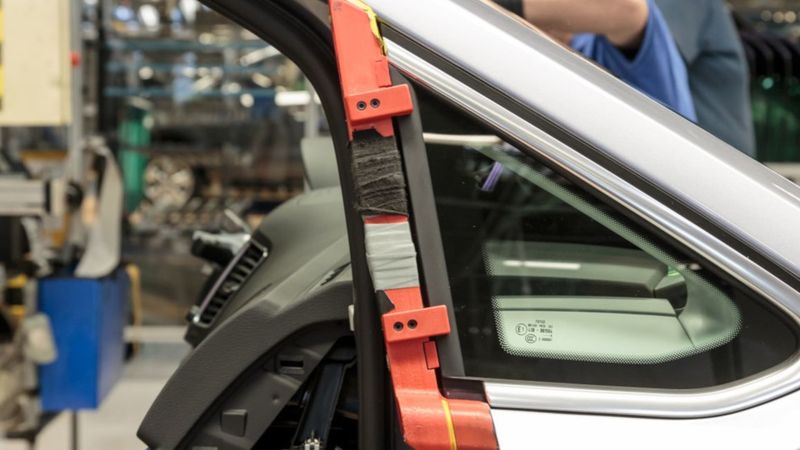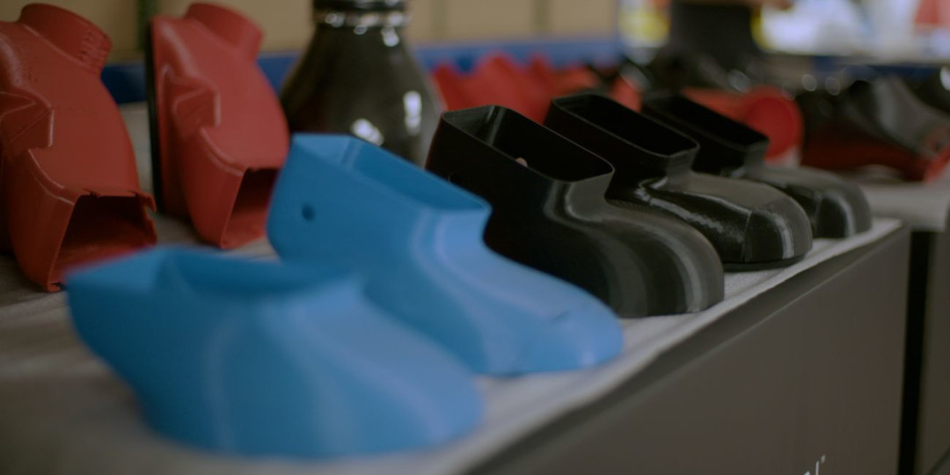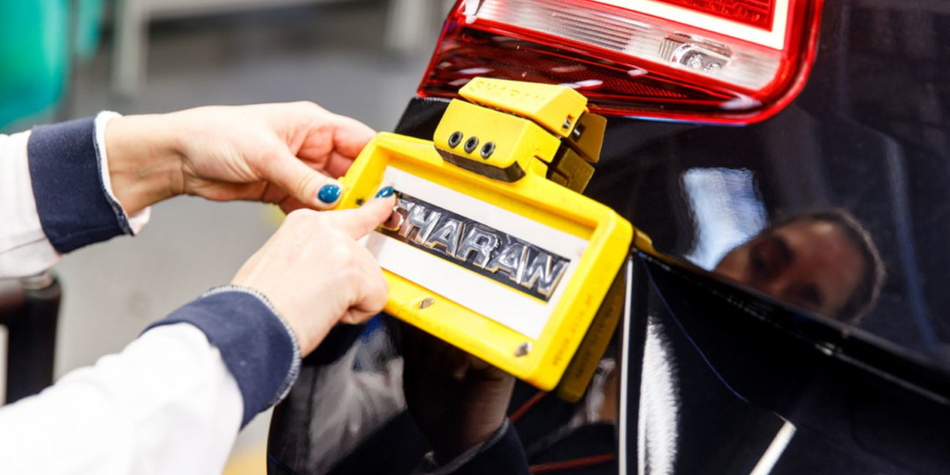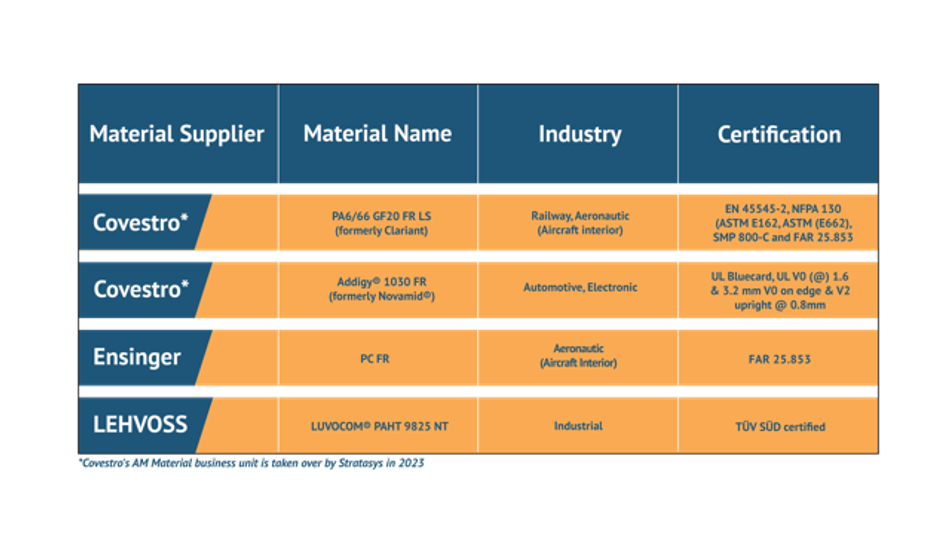Sea, Land, and Sky: How 3D Printing Impacts Transport
#4 UltiMaker Manufacturing Insights Series. 3D printing is enabling rapid prototyping and more efficient manufacturing across the transport sector.
Transforming Production: The Unseen Power of 3D Printing
With the playbook “Transforming Production - The Unseen Power of 3D Printing”, manufacturers and engineers can draw inspiration from experts who are already using 3D printing in their production processes. This free PDF provides high-value application suggestions and detailed case studies of what you can achieve using FDM (Fused Deposition Modeling) 3D printing technology.
Fill in this short form to get your copy directly to your inbox.
In this article, the fourth in an UltiMaker-support series, we’re exploring the many ways transport industries are utilizing the technology, from rapid prototyping to manufacturing aids to end-use parts, and looking at what to expect down the road. Our previous two series of articles focus on the manufacturing and packaging industries.
Transport industries such as aviation and automotive have been linked to 3D printing since the earliest days of the technology. To give you an idea of how deep these ties run, automotive companies—such as Ford, which purchased one of the first 3D printers—and aerospace companies were among the very first investors and adopters of 3D printing in the late 1980s.
At the time, 3D printing represented a new solution that could disrupt how parts were designed, and prototyped. Today, this potential and more have been realized, as transport industries continue to be enthusiastic adopters of additive manufacturing, leveraging the technology’s unique ability to produce optimized designs, speed up product development, offer cost-effective low-volume manufacturing, and shore up manufacturing workflows and supply chains.
At this stage in additive’s evolution, the technology represents but a small fraction of the value of transport industries overall worth. For instance, in 2021 the global automotive manufacturing market was estimated to be worth $2.86 trillion[1]; the automotive additive manufacturing, for its part, was calculated at about $2.9 billion in 2022 [2] (accounting for roughly 0.10% of the automotive market value). But the value of AM in transport is growing steadily as adoption grows, process automation increases and new applications are validated. In aerospace, for example—even after the slowdown caused by Covid-19 lockdowns—the additive manufacturing market is growing steadily, expected to reach over $13 billion in 2028 (from $3.73 billion in 2021).[3] This growth is true across all transport industries.
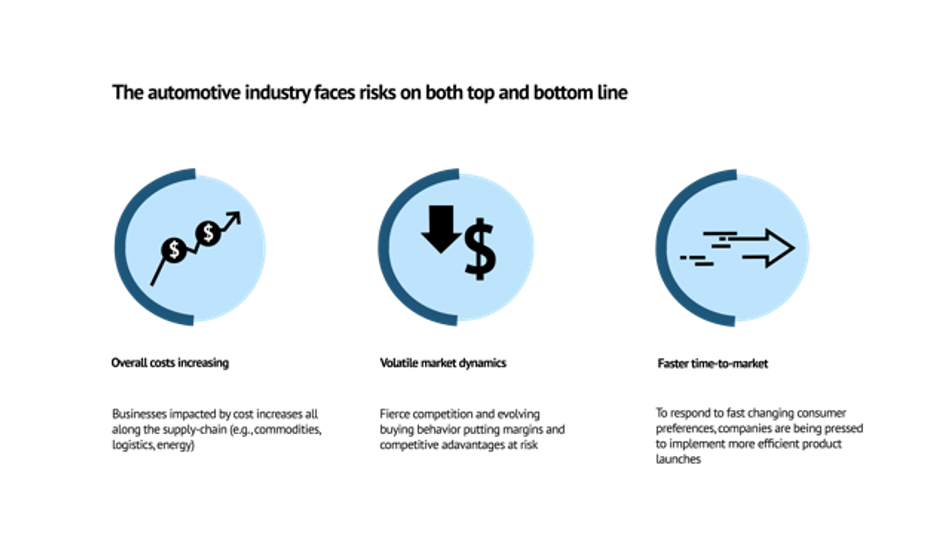
Accelerating Product Development
Additive manufacturing is now widespread across many sectors for prototyping and product development. The transport industry is no exception. In automotive, aviation, and rail, 3D printers enable engineers and designers to rapidly and cost-effectively print, test, tweak, and validate new designs. Crucially, physical 3D printed prototypes give transport manufacturers the ability to easily go back to the drawing board in order to overcome design flaws without significantly increasing turnaround times (thanks in part to a 3D printer’s ability to build parts unattended day and night). This means that not only can new designs be brought to market faster and cheaper, but that flaws can be detected early on in the product development cycle, reducing the risk of major overhauls and costly product recalls. In other words, 3D printing unlocks better product design.
Fused filament fabrication (FFF) systems, such as UltiMaker’s, are particularly well suited to functional prototyping. UltiMaker printers can accommodate a wide range of materials, from standard filaments to engineering-grade composites. This versatility enables engineers and product designers to print prototypes with properties that closely resemble (and even match) the properties of the final part, facilitating functional testing and validation processes.
At Eventuri, which manufactures intake systems for high-performance vehicles like the Audi RS range and M-Power BMW, 3D printing is now an integral part of its product development process. The company relies on UltiMaker 3D printers to rapidly transform digital intake duct models into physical prototypes that can be tested for both function and fit. If performance is lacking or the fit isn’t quite right, Eventuri engineers can simply adjust the design in CAD software and reprint it for validation. It goes without saying that this agile and fully in-house workflow has saved the company both time and money, and enabled it to develop superior intake designs.
Manufacturing Efficiency in Transportation
If you look at a production line in the transport sector today, there’s a good chance you’ll come across a 3D-printed component—or several. The technology is increasingly being used to improve the efficiency of production environments through the development of jigs, assembly fixtures, quality control tools, and replacement parts. In this context, FFF 3D printing offers a number of distinct benefits: it facilitates on-site, on-demand production (thus minimizing machine downtimes); it does not require tooling; it is a user-friendly technology that production line operators and engineers can easily master; and it enables the development of more efficient and ergonomic production aids, which boosts productivity and safety.
In the automotive industry, in particular, manufacturers have transformed their production workflows by adopting FFF 3D printing in-house. For example, Volkswagen Autoeuropa now uses a fleet of UltiMaker 3D printers to produce the vast majority of its manufacturing tools. Prior to using 3D printing, the automotive company relied on external manufacturers to make manufacturing aids and tools, which could often take weeks to deliver. With 3D printing in-house, however, Volkswagen Autoeuropa has reduced tool development time by as much as 95% and reduced costs by 91%.
Taking End-Use Parts Up a Gear
Additive technologies are also having a big impact in transportation when it comes to end-use parts. This application area is primarily driven by 3D printing’s design freedom—which enables unprecedented geometries to be realized—and its scalability. In terms of design, 3D printing offers a way to create previously impossible geometries, such as organic shapes and features like internal cavities and channels. It also allows for part consolidation, which minimizes assembly time and, often, part weight. Looking at scalability, 3D printing is among the best manufacturing processes for low-volume production. This is a big draw for the aerospace sector, which typically requires smaller production runs of highly complex parts. However, scaling up production is also possible: it simply requires the addition of more 3D printer units.
The technology’s design capabilities are particularly valuable in the transport space where integrating more lightweight components into vehicles is key to improving fuel efficiency. In aviation, for instance, GE’s FAA-certified GE9X engine integrates over 300 3D printed parts, including consolidated fuel nozzle tips. The lightweight design of these printed parts has contributed to a 10% increase in fuel efficiency compared to previous engine systems.[4]
In automotive, 3D printing is also used for end-use production, especially when low volumes or customization are required. Tucci Hot Rods, an American car restoration service, regularly uses 3D printing to produce custom car parts for its clients. The family-run business relies on 3D printers—including two UltiMaker machines—to create car modifications, like 3D printed dashboards, in a timely and cost-effective manner. Thanks to the technology, the company has tripled the speed of production and saved up to 90% in costs. At SEMA 2022, the company unveiled a 2021 Ford Maverick that integrated a large number of 3D printed components made from PETG, including fender flares, brake ducts, rear wing, and more.[5] Each printed part was post-processed before assembly, resulting in a unique compact truck that takes advantage of the customization abilities of AM
UltiMaker’s metal FFF capabilities have also proven to be of value in transport sectors. Today, there are many examples of the company’s accessible metal 3D printing capabilities (possible thanks to a combination of the UltiMaker S5, Metal Expansion Kit, and BASF Ultrafuse® stainless steel filaments) empowering transport manufacturers to produce end-use components. Liebherr-Components Colmar SAS, which designs and builds diesel engines, turned to metal FFF to produce an engine bracket in order to save time and money. The part, only needed in limited quantities, originally cost $102 when it was CNC machined and took a long time to create. After validating metal FFF for the application, Liebherr Components optimized the bracket’s design, which resulted in a final component with three times the load bearing capacity and a 60% reduction in mass compared to the machined bracket. The printed part also reduced costs by nearly half and accelerated lead times significantly.
This is just one case study among many. Kawasaki Motors Corp., which designs parts for motorcycles, now 3D prints shift levers out of BASF Ultrafuse® 17-4PH stainless steel. The parts are more resistant than their aluminum counterparts and are much more cost-efficient. On top of that, the motorcycle maker can now customize the shift lever for different riders. Schwartz Off Road Motorsportz (SORM) also used metal FFF in the production of its one-of-a-kind SxS Pro Mod race car. Specifically, it upgraded a mount component from carbon fiber nylon to 17-4PH stainless steel. Metal FFF enabled SORM to customize the part and achieve greater temperature resistance.
Opportunities for Future Innovation
If we look at current trends in transport—particularly in the automotive industry—it’s clear that 3D printing is one of the key technologies driving them. For example, additive manufacturing is actively used in the development of electric vehicles (EVs) for prototyping and production parts, including battery housings that must be compact and designed for optimal fit. EVs also benefit massively from lightweighting that 3D printing enables because weight influences battery mileage.[6]
Establishing more sustainable practices and circular economies is also a key priority that transport industries are taking more seriously. As we saw, 3D printing is helping on this front through the production of more lightweight parts. But there are also ways transport companies are pursuing sustainability.
Take Dutch airline KLM, which is making strides in creating a circular economy by transforming PET water bottles from its flights into 3D printing filament. This filament is used to produce functional components, such as engine blade fan covers, which protect parts of the engine blade during sandblasting. This process prepares fan blade surfaces for various treatments, like paint removal and paint application, oil and rust removal, and general cleaning. By using UltiMaker systems and recycled filament, KLM is able to produce these functional components efficiently and sustainably.[7]
Other transport sectors like rail and maritime are increasingly realizing the potential of additive technologies. Thanks to AM, train MRO services and rail companies like Deutsche Bahn and ÖBB are now able to reverse engineer and 3D print train components that are difficult or impossible to source, leading to shortened downtimes for trains.[8] The ever-growing list of available materials—including high-temperature thermoplastics and flame-retardant filaments—combined with open materials platforms like UltiMaker’s, are also creating new opportunities for functional railway and transport parts. At Austrian railway company ÖBB, for instance, engineers are currently evaluating the use of 3D printed stainless steel components made using UltiMaker’s systems and Ultrafuse stainless steel filament in a proof of concept. The railway firm is also employing additive solutions to simplify its supply chain thanks to just-in-time production, as well as minimize inventory and transport needs.
In maritime transport, an industry said to account for over 80% of the world’s trade[9], 3D printing has the potential to shore up fragile and inefficient supply chains for spare parts. On this front, shipping company Wilhelmsen is leading the way by developing a digital inventory of certified spare parts that can be printed onboard ships for in-situ maintenance or at the nearest port for shorter lead times for replacement parts.[10] This approach shortens supply chains, which not only simplifies how spare parts are sourced but also increases sustainability by reducing transport emissions.
Across all transport industries, the implementation of 3D printing is unlocking benefits and efficiencies, including decreased lead times and a faster time to market; greater production flexibility and uptimes for factory lines; enhanced equipment efficiency and safety for operators; streamlined operations and shortened supply chains; and more efficient warehousing and inventory operations.
Conclusion
From sea to sky, 3D printing solutions like UltiMaker’s FFF ecosystem are helping to transform all transport industries. Engineers, OEMs, and MROs in the automotive, aviation, rail, and maritime segments are experiencing the benefits of 3D printing across their operations and are continually exploring new ways to utilize the technology to reduce lead times, save on costs, and develop new innovations.
References
1. Global car manufacturing industry revenue between 2019 and 2022 [Internet]. Statista. August 28, 2023. Available from: https://www.statista.com/statistics/574151/global-automotive-industry-revenue/
2.Automotive 3D Printing Market: Trends Forecast Till 2030 [Internet]. Delvens. January 2023. Available from: https://www.delvens.com/report/automotive-3d-printing-market-trends-forecast-till-2030
3. Aerospace & Defense Additive Manufacturing Market to worth USD 13.01 Billion by 2021 [Internet]. Fortune Business Insights. March 30, 2022. Available from: https://www.globenewswire.com/news-release/2022/03/30/2412529/0/en/Aerospace-Defense-Additive-Manufacturing-Market-to-worth-USD-13-01-Billion-by-2021-2028-Aerospace-Defense-Additive-Manufacturing-Industry-CAGR-of-19-51.html
4. 3D Printed Jet Engine: Meet the Team of Young Engineers that Brought 3D Printing Inside the GE9X - The World’s Largest Jet Engine [Internet]. GE. January 26, 2020. Available from: https://www.ge.com/additive/stories/3d-printed-jet-engine-meet-team-young-engineers-brought-3d-printing-inside-ge9x-worlds-largest
5. MandicReally. 3D Printed Custom Truck at SEMA [Internet]. Youtube. April 16, 2022. Available from: https://www.youtube.com/watch?v=q8nky814iE
6. Sher, Davide. How AM is ushering in a new generation of EVs [Internet]. VoxelMatters. January 2, 2023. Available from: https://www.voxelmatters.com/how-am-is-ushering-in-a-new-generation-of-evs/
7. Reaching new heights: 3D printing and aerospace [Internet]. UltiMaker. 2023. Available from: https://ultimaker.com/learn/reaching-new-heights-3d-printing-and-aerospace/
8. 3D printing at DB [Internet]. Deutsche Bahn. 2023. Available from: https://www.deutschebahn.com/en/3d_printing-693510
9. Review of Maritime Transport 2021 [Internet]. UNCTAD. 2021. Available from: https://unctad.org/publication/review-maritime-transport-2021

